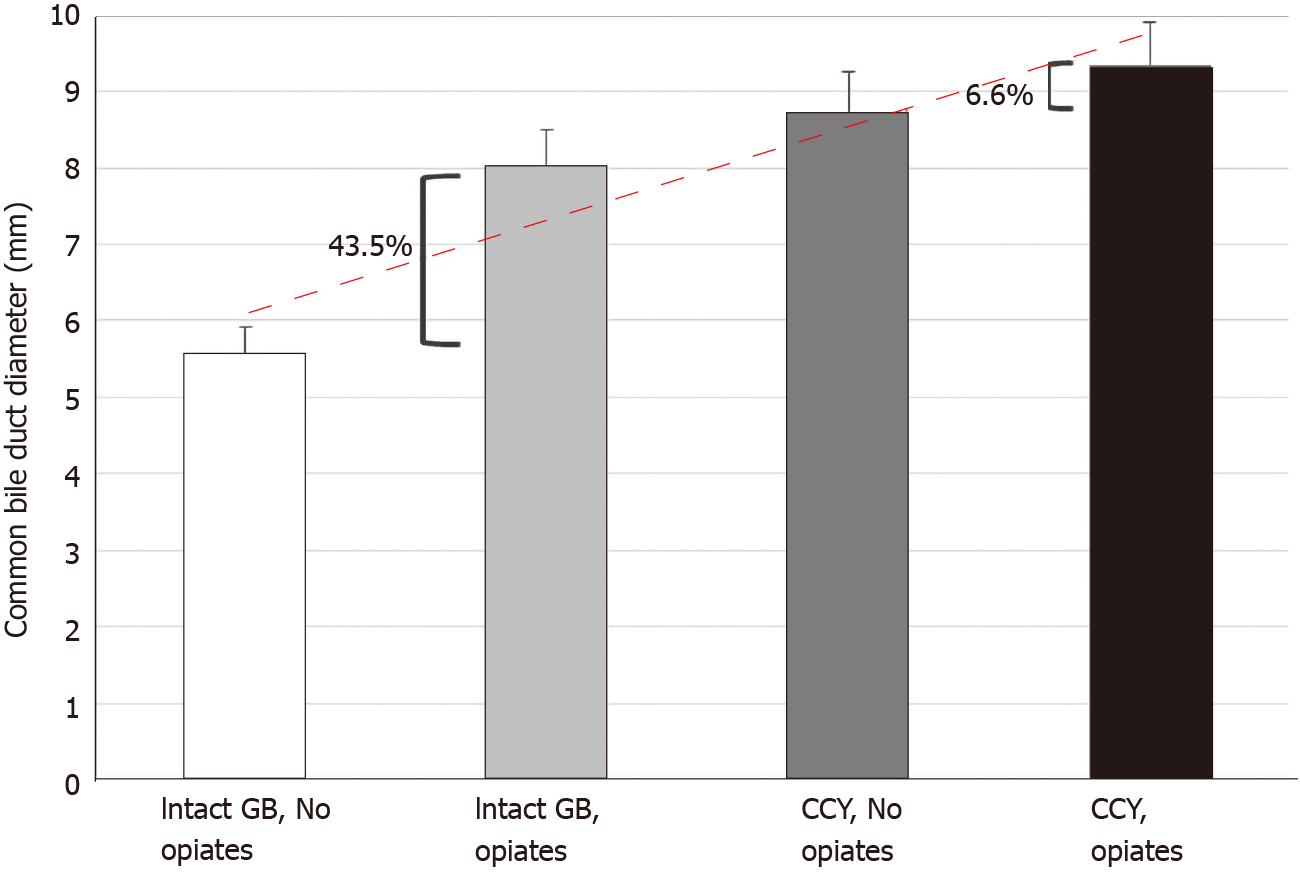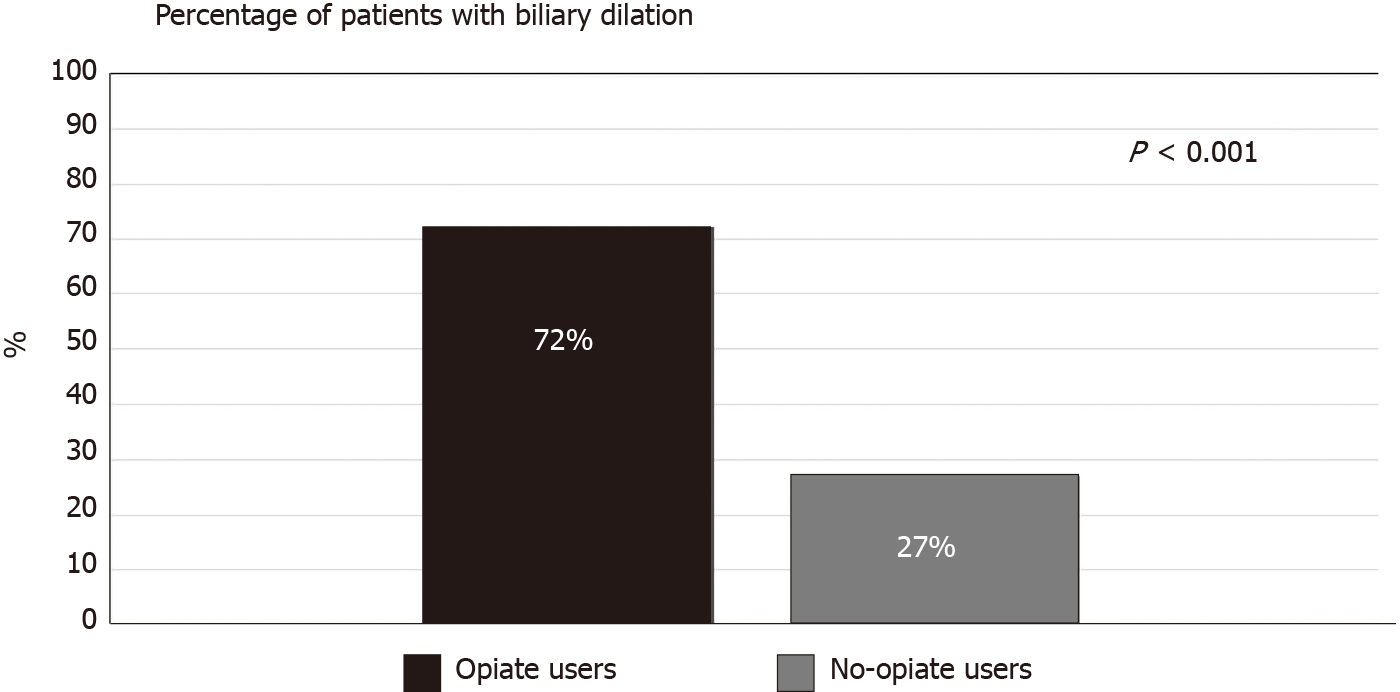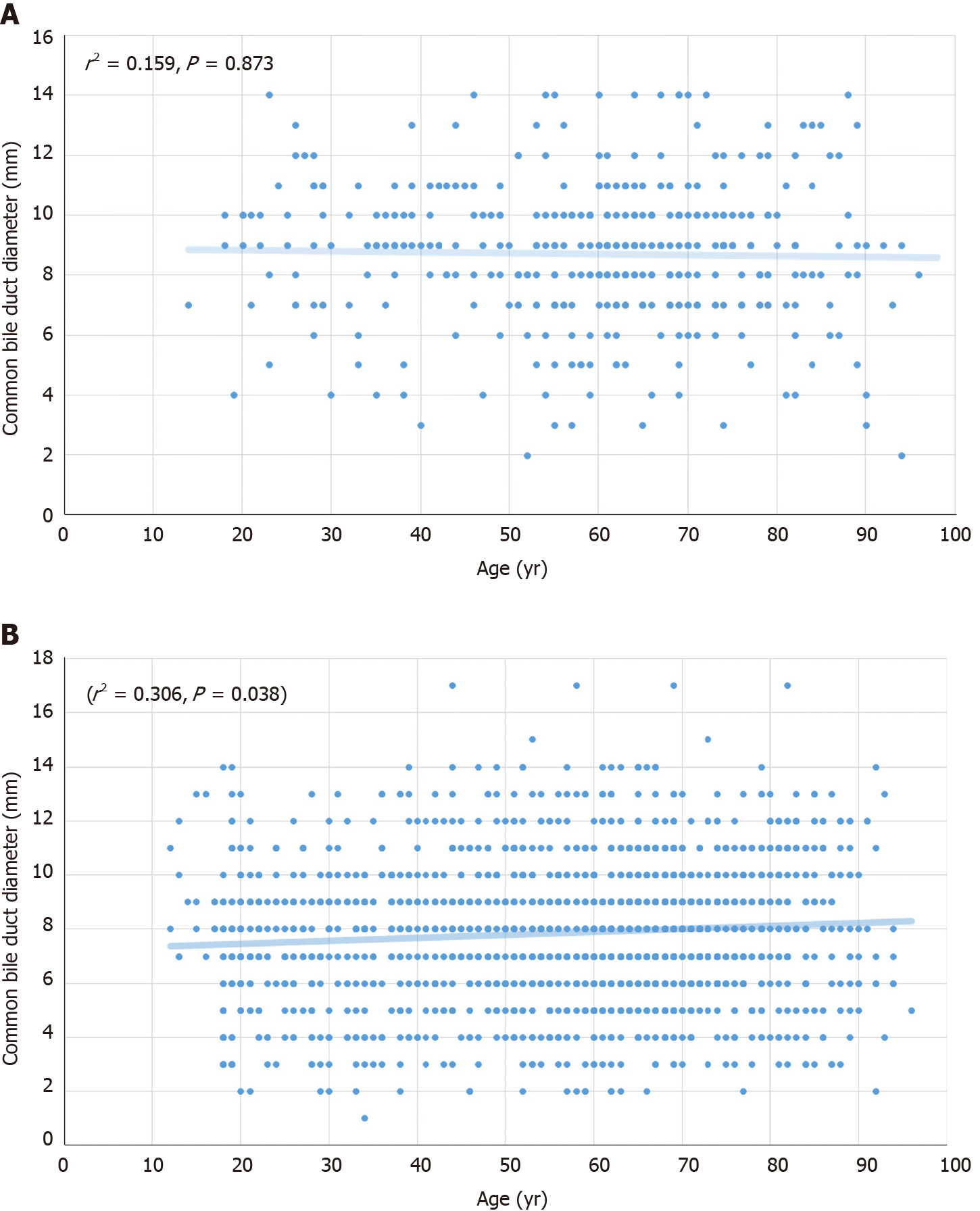Copyright
©The Author(s) 2020.
World J Hepatol. Dec 27, 2020; 12(12): 1289-1298
Published online Dec 27, 2020. doi: 10.4254/wjh.v12.i12.1289
Published online Dec 27, 2020. doi: 10.4254/wjh.v12.i12.1289
Figure 1 Common bile duct diameter varies with gallbladder and opiate use status.
Bar graph depicting mean common bile duct (CBD) diameter for groups categorized by gallbladder status and opiate use. The lowest CBD diameter is seen in patients with an intact gallbladder who did not use opiates, with sequentially increasing diameters noted in patients with an intact gallbladder who used opiates, and in those with prior cholecystectomy who did not use opiates, with the largest mean CBD diameter observed in patients with a history of both cholecystectomy. Trendline (red) depicts this trend, error bars depict standard deviation. Calipers indicate percentage change between the means of indicated categories. GB: Gallbladder; CCY: Cholecystectomy.
Figure 2 Percentage of patients with biliary dilation.
Bar graph depicting proportion of all patients, regardless of age and cholecystectomy status, with biliary dilation when 7 mm was used as the threshold for normal bile duct diameter. With this threshold of normal bile duct diameter, 72% of opiate using patients had biliary dilation, as compared with only 27% of non-opiate using patients.
Figure 3 Overall (all groups combined), age weakly predicts common bile duct diameter, suggesting that cholecystectomy status and opiate use may be more common in older individuals and this may be driving previously-described associations between age and biliary dilation.
A: Advancing age weakly predicts increased CBD diameter in all patient groups combined; B: Age is not predictive of CBD diameter in patients with an intact gallbladder who do not use opiates.
- Citation: Barakat MT, Banerjee S. Incidental biliary dilation in the era of the opiate epidemic: High prevalence of biliary dilation in opiate users evaluated in the Emergency Department. World J Hepatol 2020; 12(12): 1289-1298
- URL: https://www.wjgnet.com/1948-5182/full/v12/i12/1289.htm
- DOI: https://dx.doi.org/10.4254/wjh.v12.i12.1289











